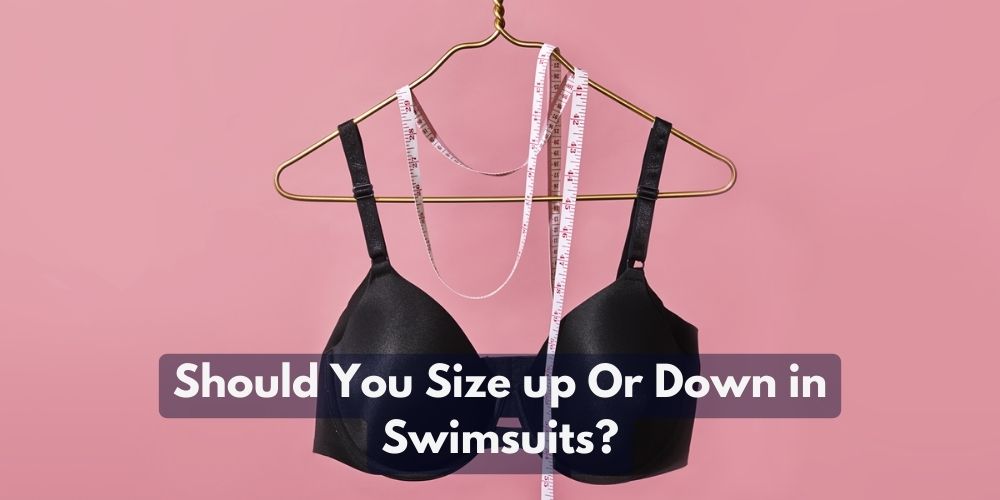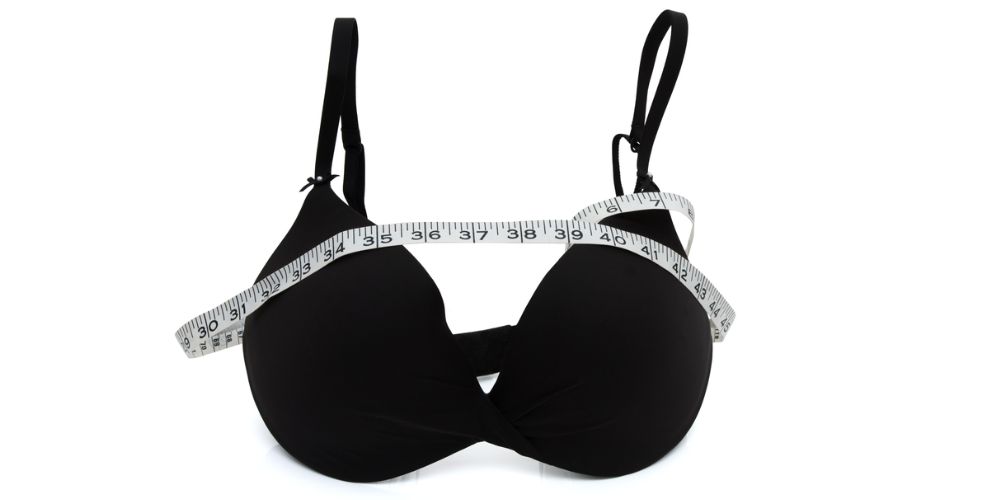
Shopping for the perfect swimsuit can often be a daunting task. One of the biggest dilemmas many faces is whether to size up or down when purchasing swimwear.
In this article, we’ll delve into this topic and provide valuable insights to help you make an informed decision. We’ll explore the importance of finding the right fit, discuss the benefits and drawbacks of sizing up and down, and provide tips on choosing the perfect swimsuit size.
This will help you have the knowledge you need to confidently select the right size for your next beach or poolside adventure. So, let’s dive in and find out if you should size up or down in swimsuits.
Should You Size Up Or Down in Swimsuits?

When it comes to sizing for swimsuits, the general rule is to consider sizing down rather than up. But following the sizing guidelines provided by the specific brand or retailer you’re purchasing from is generally recommended.
However, there are some general tips to consider:
1. Refer to the sizing chart
Most brands provide a sizing chart that includes measurements for different sizes. Please compare your measurements (bust, waist, hips) to the chart to determine the most appropriate size.
2. Consider your body shape
Different swimsuit styles may fit differently depending on your body shape. For example, you might need to size up for better coverage and support if you have a larger bust. If you have a more petite figure, you might prefer to size down for a more flattering fit.
3. Fabric and stretch
Swimsuits are typically made of stretchy materials like spandex or elastane. Keep in mind that these fabrics can provide some flexibility and adaptability. If you’re between sizes, you might be able to choose the smaller size if the material has a good stretch.
4. Brand variations
Sizing can vary between brands, so checking their specific guidelines is essential. Some brands may run smaller or larger than standard sizes, so reading customer reviews or seeking size recommendations can be helpful.
5 Benefits of sizing up in Swimsuits
1. Extra Coverage
Sizing up allows for more coverage, which can be beneficial if you prefer a more subtle look or want to hide certain areas of your body.
It provides a sense of comfort and confidence, knowing you have the desired level of coverage.
2. Comfortable Fit
Larger sizes in swimsuits can offer a more comfortable fit. It provides extra room for movement and reduces the risk of fabric digging into the skin—engaging in activities or spending extenspendingeriods in the sun.
3. Improved Flexibility
Sizing up in swimsuits can provide increased Flexibility and freedom of movement. It allows you to move freely in the water without feeling restricted or constrained by a tight-fitting suit. This can be particularly advantageous if you enjoy swimming, surfing, or playing beach volleyball.
4. Adjustability
Slightly larger swimsuits often have adjustable features like straps, ties, or closures. These allow you to customize the fit according to your preference and ensure that the swimsuit stays securely in place, providing the proper support and comfort.
5. Easier Layering
Sizing up can make it easier to layer your swimsuit with other clothing items such as cover-ups, rash guards, or wetsuits. Extra room in your swimsuit allows for a more seamless and comfortable layering experience, making it ideal for cooler water temperatures or when additional sun protection is needed.
4 Drawbacks of Sizing Up in Swimsuits
1. Lack of Support
Sizing up too much in swimsuits can result in a lack of support. Swimsuits are designed to provide lift and shape; going too large in size may compromise their ability to do so. This can be particularly problematic for individuals with a larger bust or those seeking optimal support during water activities.
2. Loose Fit
Sizing excessively can lead to a loose fit, resulting in excess fabric that may gather or sag in certain areas. This can create an unflattering appearance and detract from your desired silhouette. A loose swimsuit may also hinder your movement in the water and affect your overall comfort.
3. Reduced Body Contouring
Swimsuits are often designed to enhance and accentuate your body’s natural contours. When you size significantly, the suit may fail to hug your curves or provide the desired shaping effect. This can result in a less flattering look and may not showcase your body as you intend.
4. Potential Wardrobe Malfunctions:
Sizing up too much increases the risk of experiencing wardrobe malfunctions. A too-large swimsuit may shift or move out of place, exposing more skin than intended. This can be particularly concerning during active water sports or energetic movements.
Benefits of sizing down in swimsuits
1. Limited Style Options
Opting for a larger size in swimsuits may limit your style options. While some brands offer a range of sizes across their swimwear collections, others may have limited availability in larger sizes. This can make it more challenging to find the desired style, pattern, or design that suits your preferences.
2. Enhanced Support
Sizing down in swimsuits can provide increased support, particularly for individuals with a fuller bust. A snugger fit can offer better lift and control, ensuring you feel secure and confident while enjoying water activities.
3. Streamlined Look
Opting for a smaller swimsuit size can help achieve a more streamlined and figure-hugging silhouette. It can accentuate your body contours and create a visually appealing shape, enhancing your overall appearance.
4. Improved Mobility
Sizing down can contribute to better mobility in the water. A swimsuit that fits snugly allows for more effortless movement without excess fabric getting in the way. This is especially beneficial for swimming, diving, or participating in water sports.
5. Reduced Drag
You can minimize drag in the water by sizing down. A tighter-fitting swimsuit reduces resistance, allowing you to move more effortlessly and efficiently through the water. This can enhance your performance and make swimming or other activities more enjoyable.
6. Increased Comfort
Sizing down can offer a comfortable and supportive fit, provided the swimsuit is not overly tight. It helps to prevent the fabric from bunching up or shifting during movements, ensuring a hassle-free and comfortable experience while wearing the swimsuit.
5 Drawbacks of Sizing Down
1. Restricted Movement
Sizing too much in swimsuits can restrict movement. A smaller size may limit your range of motion, making it challenging to move freely in the water. This can be particularly problematic during water activities that require a wide range of movements, such as swimming laps or engaging in water sports.
2. Uncomfortable Fit
Squeezing into a size that is too small can result in discomfort. The tightness of the swimsuit may dig into your skin, causing irritation or even pain. It can also create unflattering bulges or indentations, affecting your comfort and confidence while wearing the swimsuit.
3. Impaired Blood Circulation
Wearing a swimsuit that is too small can potentially restrict blood circulation. This can lead to discomfort, numbness, or tingling sensations in the affected areas. It’s essential to prioritize your health and well-being by opting for a size that allows proper blood flow.
4. Unflattering Appearance
Sizing down excessively can result in an unflattering appearance. The swimsuit may cause bulges or create unflattering lines on your body, drawing attention to areas you may not want to emphasize. Choosing a size that flatters your body shape and highlights your best features is essential.
5. Potential Damage to the Swimsuit
Squeezing into a size that is too small can strain the swimsuit fabric and seams. This can lead to stretching, tearing, or even permanent damage to the garment. It’s essential to choose a size that provides a comfortable fit without compromising the durability and integrity of the swimsuit.
Tips for Finding the Right Fit
Here are some practical tips to help you find the perfect fit when shopping for swimsuits:
1. Measure Yourself Accurately
Take accurate body measurements using a measuring tape and refer to size charts to determine the appropriate size range.
2. Read Size Guides and Customer Reviews
Consult the size guides provided by swimwear brands and read customer reviews to gather insights into how their products fit.
3. Try On Different Sizes
If possible, try on different sizes to assess how they feel and flatter your body shape before making a final decision.
4. Pay Attention to Fabric and Stretch
Consider the fabric composition and the presence of stretch in the swimsuit material. Fabrics with more stretch may allow for a more forgiving fit.
Final Words
Choosing the right size for swimsuits is essential to feeling comfortable and confident while enjoying your time at the beach or pool. While there are differing opinions on whether to size up or down, it ultimately comes down to personal preference and individual body shape.
Understanding swimsuit sizing, which often differs from regular clothing sizes, is crucial. It’s important to refer to size charts provided by brands, as there is no universal standard across all swimwear lines.
Regardless of the size chosen, trying on swimsuits before making a purchase is essential. Utilize well-lit fitting rooms and experiment with different sizes and styles to find the perfect fit that offers both movement and comfort.
